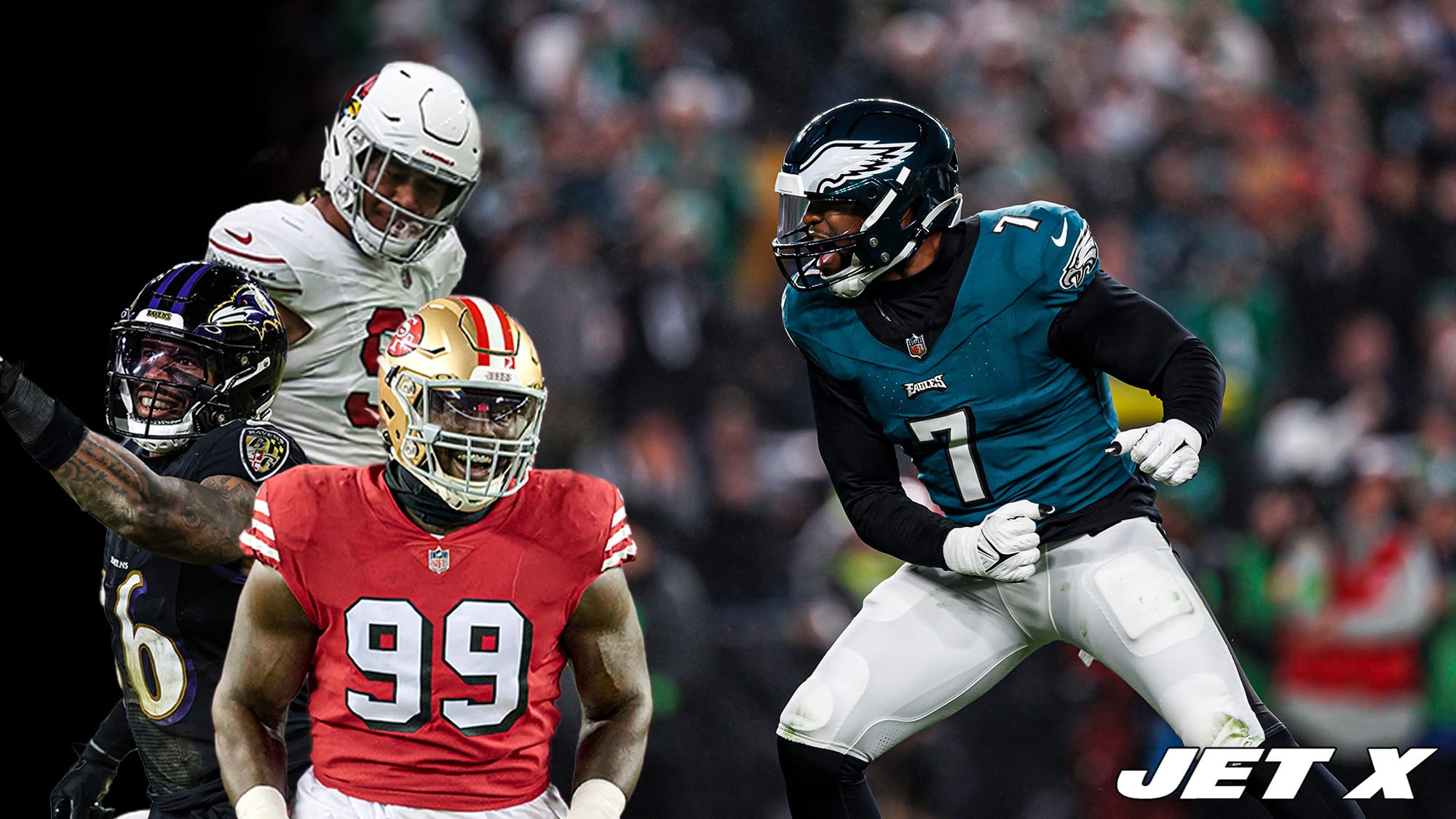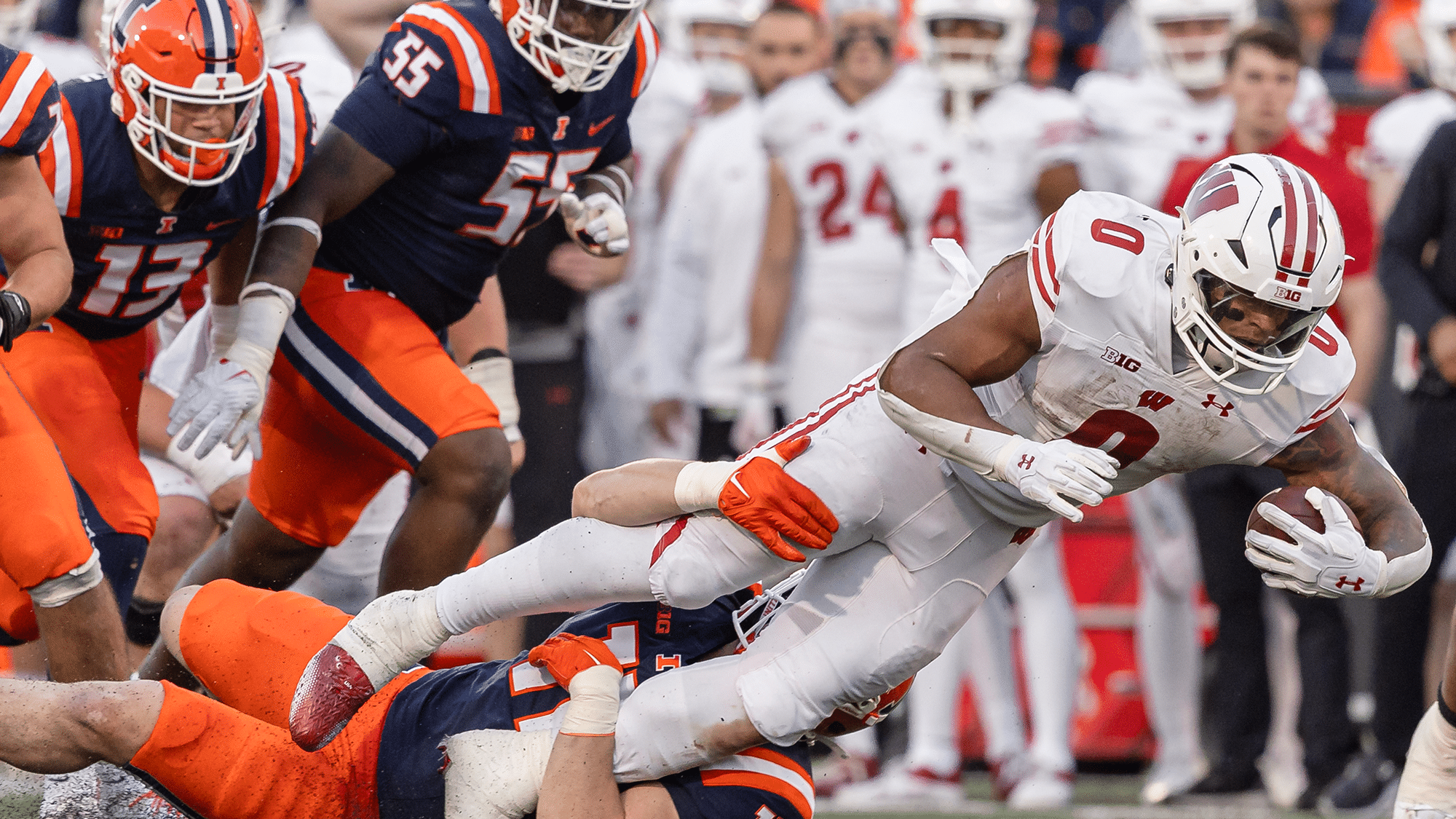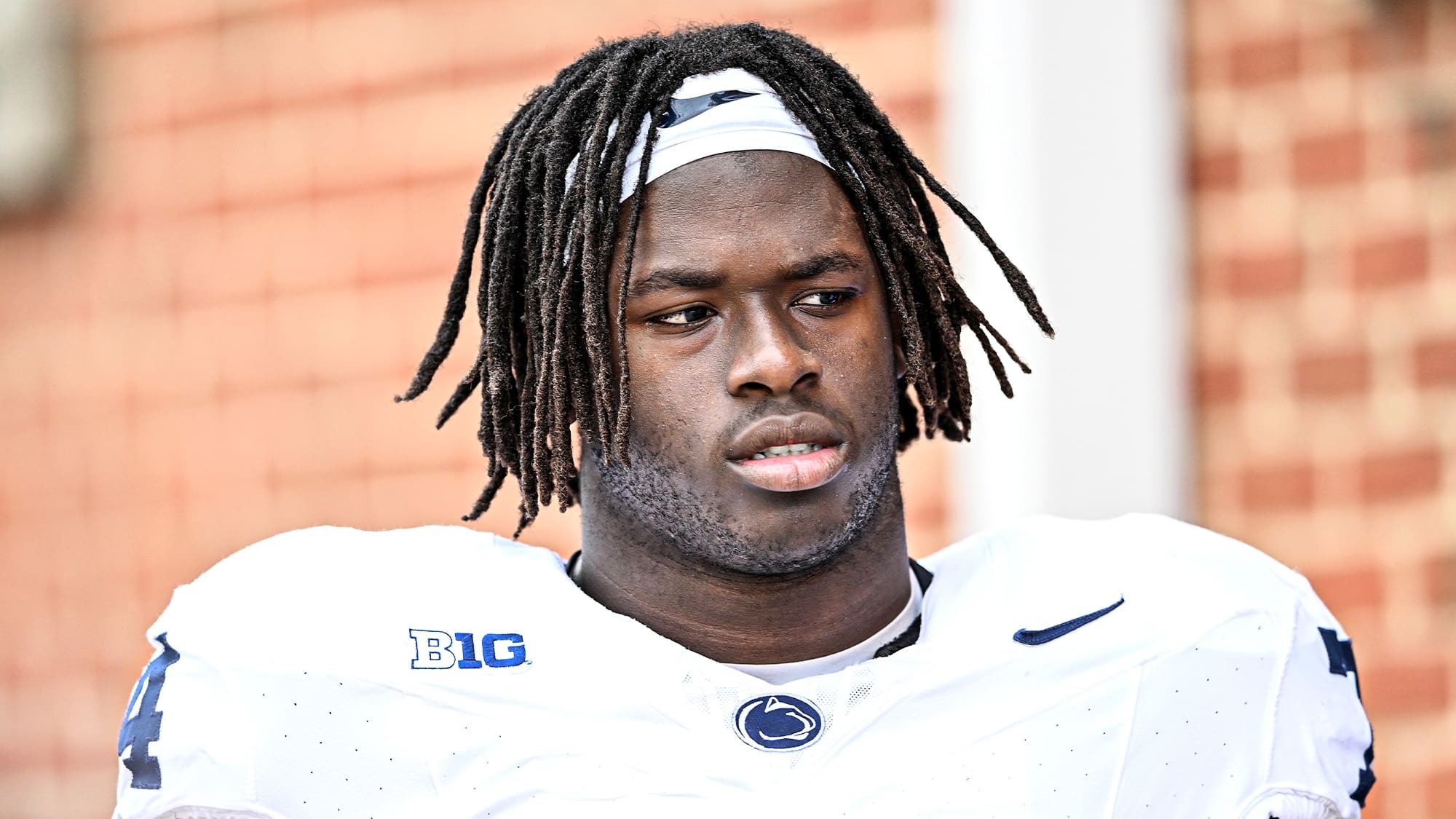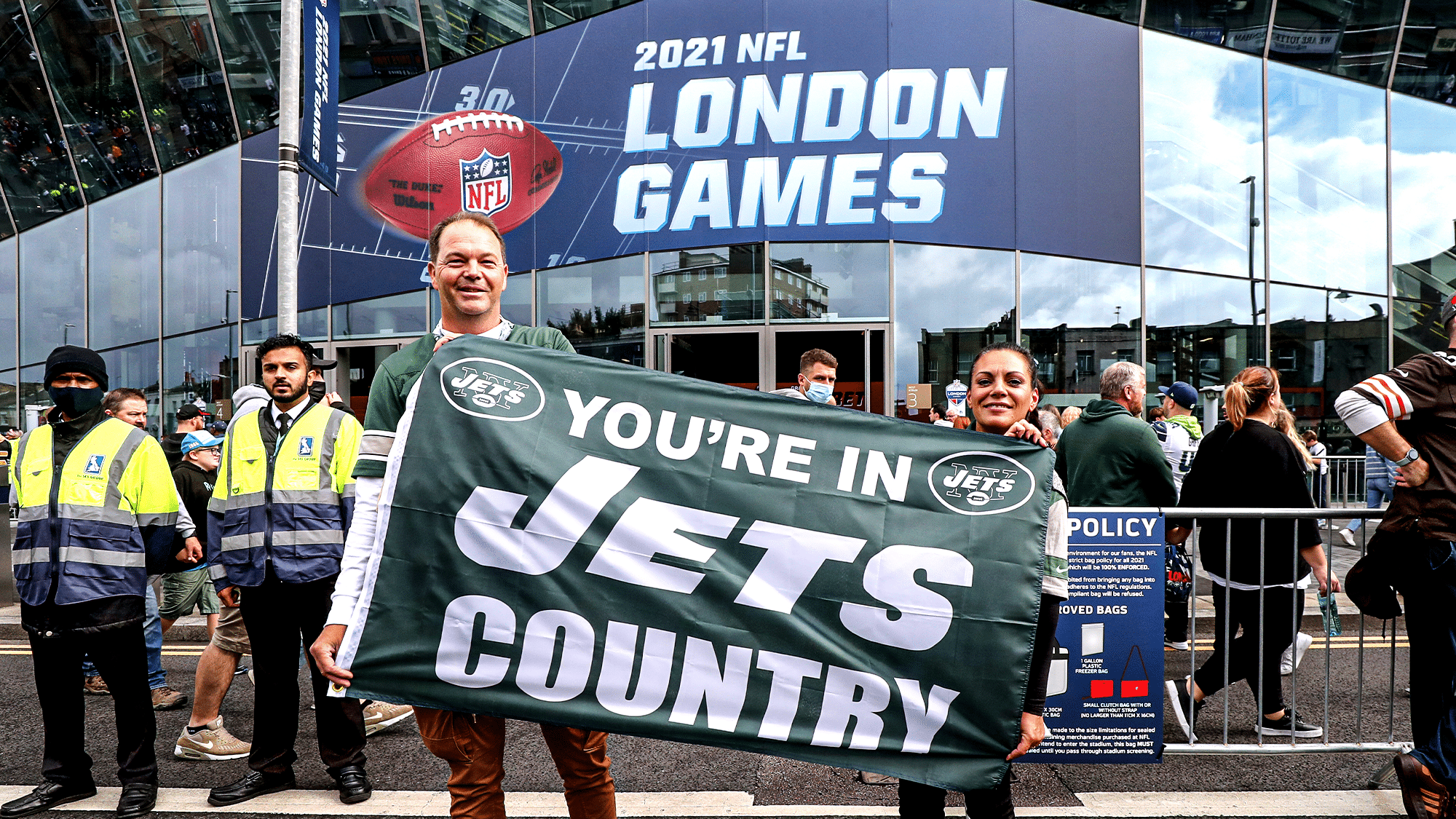Potential New York Jets target Derek Carr is a victim of shallow analysis
Quarterback analysis in the NFL is centered around simplistic narratives and labels that can be easily formed through one measly Google search of someone’s box score stats and win-loss record. It often feels like there is no place in the conversation for thorough, contextualized evaluation of a quarterback’s true on-field impact.
This becomes clearly evident when you compare the way people talk about Derek Carr to the way people talk about Jimmy Garoppolo and Ryan Tannehill – three of the most widely-discussed quarterback options for the New York Jets.
Read More Jet X Content:
Article: NY Jets’ pursuit of veteran QB reflects reality of NFL team-building
Article: NY Jets should avoid Ryan Tannehill for same reason as Jimmy G
Article: 3 NY Jets players who’d benefit most from Aaron Rodgers
These tweets by Dan Orlovsky perfectly exemplify the shallowness of NFL quarterback analysis.
If the @nyjets can’t or don’t want to get Rodgers I’d bet they’re much more willing to go after Jimmy G or Tannehill than they are Carr.
— Dan Orlovsky (@danorlovsky7) February 16, 2023
They need to go to playoffs or fired. If you’re rolling the dice—you’re rolling it with who you deem to be the least risky. Defensive minded HC—play good D, run ball, don’t lose game QB….that’s Jimmy g and Tannehill in their eyes (is my guess)
— Dan Orlovsky (@danorlovsky7) February 16, 2023
And, to be fair, Orlovsky is actually one of the most thorough quarterback analysts on the national level. This isn’t a shot at him or his work – he does a great job of going deep in his analysis. I just think this particular pair of tweets highlights the issues I have with the way quarterbacks are generally analyzed.
Orlovsky says he believes the Jets would be more likely to pursue Jimmy Garoppolo or Ryan Tannehill than Derek Carr. His reasoning is that he thinks the Jets would prefer the “least risky” option, citing their defensive-minded head coach, good defense, and desire to run the football. With these things in mind, Orlovsky thinks the Jets will want a “don’t lose game QB”.
Those are perfectly fine points and I agree with them. My question is this: Why are Garoppolo and Tannehill considered quarterbacks who can play that brand of football but Carr is not?
Let me answer that for you: The quality of the teams they played on.
Garoppolo and Tannehill are only viewed as safe, game-managing, “won’t lose you the game” quarterbacks in the public eye because they have had the luxury of playing on teams that were built to win in that fashion. Carr has never played on a team that could win games without asking too much from the quarterback like Garoppolo’s 49ers or Tannehill’s Titans could.
Here is a look at where each quarterback’s team has placed in rushing yards per game and points allowed per game:
- 49ers from 2019-22: 20.3 PPG allowed (4th), 132.1 rushing yards per game (5th)
- Titans from 2019-22: 22.5 PPG allowed (11th), 143.2 rushing yards per game (2nd)
- Raiders from 2014-22: 26.2 PPG allowed (32nd), 104.7 rushing yards per game (26th)
It’s no wonder Garoppolo and Tannehill have put together strong win-loss records and Carr has not. Garoppolo and Tannehill have enjoyed great defenses and dominant rushing attacks while Carr has been forced to deal with terrible defenses and lackluster rushing attacks.
These are factors that the quarterback has no control over. Yet, they play a massive role in determining the narrative of who a quarterback is.
Would Garoppolo and Tannehill be considered safe game managers who know how to win if they played on the Raiders? Probably not. Would Carr be considered a safe game manager who knows how to win if he played on the 49ers or Titans? Most likely.
In fact, when looking at the individual statistics of these quarterbacks, I believe Carr would have been even better in Garoppolo and Tannehill’s roles on their respective teams if he switched places with them. On the other hand, I believe Garoppolo and Tannehill would have been worse than Carr if they were placed in his position with the Raiders.
Despite having immensely more pressure on his shoulders, Carr’s career interception rate is actually better than Tannehill’s and Garoppolo’s over the past four seasons:
- Garoppolo from 2019-22: 34 INT on 1,365 passes (2.49%) – 27th of 31 qualifiers
- Tannehill from 2019-22: 33 INT on 1,623 passes (2.03%) – 14th of 31 qualifiers
- Carr career: 99 INT on 4,958 passes (2.00%) – 10th of 32 qualifiers
This is a staggering comparison. Carr has spent most of his career being forced to sling the rock aggressively to compensate for bad defenses and mediocre rushing support, and yet, he throws interceptions less frequently than two guys who do not have to take many risks to win games.
Just imagine if Carr switched places with either of those quarterbacks. His interception rate is already lower than theirs, so if he got to enjoy an equally comfortable environment, that number would likely drop to an elite level.
If Garoppolo or Tannehill played in Carr’s shoes with the Raiders, they would likely be interception machines. Look no further than Tannehill’s 2.57% interception rate with Miami before he joined Tennessee, which ranked 24th out of 32 qualifiers from 2012 to 2018.
So, in spite of the popular narratives, it turns out Carr is actually better than Garoppolo and Tannehill at the skill that is largely considered the most important for a quarterback who plays on a team with a great defense and a great run game.
Couple that with Carr being significantly more durable than both quarterbacks, and it’s hard to argue Carr is not the safest option of the three if you’re looking for someone who can ensure a good roster is not wasted.
Context is key for quarterback evaluation
The bottom line is simple: When evaluating a quarterback, try to contextualize his production to figure out what his actual impact is. A quarterback’s raw stats and win-loss record are a byproduct of the entire team. We need to separate the quarterback from the quality of his surroundings to figure out exactly what effect he has on his team.
The comparison of these three quarterbacks is a perfect example. Carr, Garoppolo, and Tannehill may have similar stats at first glance, and Garoppolo/Tannehill even have significantly better win-loss records than Carr. But when you consider that Carr was working with much worse support than Garoppolo and Tannehill yet still managed to land in the same neighborhood production-wise, it becomes clear that Carr was actually the quarterback who added the most value to his team.
At least, that’s how I see it. And that’s what makes sports fun: two different people can look at the same thing and see something completely different. Maybe you completely disagree with me. If so, great! Sports would be no fun if the answers were easy to find.












Great stuff, as always. Hope your next article is a deep dive of the cold weather games. Is it the teams he was on, competition he was playing against or does he just really struggle in cold weather? Tired of hearing that narrative.
I feel like the choice of Carr versus the other guys has a lot to do with how much hope the Jets still hold out for Wilson. With Rogers, you get a guy who will be around for only a couple of years at the most and seems to be the ideal mentor for Wilson. Garoppolo is a guy with an injury history whom you would take on only if you knew you had viable replacements, like Wilson. And Tannehill is just a band-aid, the classic place holder that you bring on when you really have someone else in mind for the future. With Carr, you have a guy who might take hold of the QB position and not let it go for 7-8 years, pushing Wilson out of the picture. What is the Jet’s big picture thinking here?
Afternoon D,
There is another picture that I would like to paint for you.
If Carr can hold on to the position for the next 7-8 years, then it would mean that he was getting the job done, and that Wilson may not have developed quick enough?
At the same time, if it eliminates Wilson from being our immediate QB, I am fine with that.
It does not mean that we would not be able to find out about Wilson in the next year or two.
If Wilson turns out to be a bust, then Wilson becomes insignificant anyways.
However, let’s say Wilson develops into a great player, then what a situation the Jet’s would have on their hands.
They could possibly choose which one they wanted to move forward with in year three.
We would have a 35 year old QB, on his third year of a three/four/five year contract.
We would also have a young QB, who I would assume was developing in year three and would provide Joe the opportunity to pick up his 5th year option, or perhaps a cheap extension, in order to provide a couple more years, depending on development.
Now, this would be new to most Jet’s fans, but they would be able to not only choose the best option forward, but possibly an opportunity to trade the other for draft picks/players.
I would think that most teams would have caught wind if Wilson was improving, from the press, to insiders, to preseason games, so it will not be a big secret. If dealt, we could recoup draft stock or a player of need or deal Carr for the same.
I say, take Carr, develop Wilson, and if he develops, they will be in tremendous shape in a couple of years, if not we are still in good shape.
Who knows,
I am just throwing two cents into the fountain of thought.
Enjoy your weekend!
DO NOT LET CARR LEAVE THE BUILDING! I’m tired of garbage play at the QB position! Lets get a very good QB for once! Sign him to a contract he cannot refuse!
I was sure this would be about him playing in cold weather.
Watched Carr play Many times, my choice here. Want a QB to WIN games!
I just can’t say how much I love that once or twice a day I can read a well reasoned and thoroughly researched article by either Nania or Rivka. With all the loud media noise that overreacts to everything while most often lacking in substance it is so nice to come here and get articles with actual data, citations and logic. We as Jet fans don’t realize how damn lucky we are that X Factor works so hard to educate and inform us. Although more videos with either Sabo or Vitor would be great. Putting a link to all the X factor videos on the front page would also be wonderful.
Thank you for confirming my love of going after Derek Carr. Regardless of what the Jets do I can’t wait to hear the news. These next few weeks before FA might be quite tough as all we seem to be getting is a very slow drip of news each day especially on the Carr and Rodgers front.
Solid. I agree. I just dont totally agree with putting jimmy g and tannehill in the same exact class. Yes, i understand how theyre similar as dudes who were buoyed by good run games and good defenses. But i dont see the titans offense as the almighty juggernaut that is the shanahan system. The titans have not done Even better without tannehill like the 9iners are even better without jimmy. You show how different the int rates are, showing tannehill as meh but jimmy as pretty prettty bad. I get the circumstances are what youre pointing out, but still jimmy g is clearly worse.
The other thing with tannehill is that prior to titans, he had an awesome season with adam freakin gase in miami. I believe jimmy g in that situation.. well.. i wouldnt put money on him thriving there. So my point is, while tannehill is very much below carr, i agree, but jimmy g is very below tannehill IMO. One huge negative they both share though is many injuries. Not sure how jets would really view those guys but i have a hard time believing the jets would rather them than carr, like orlovsky says.